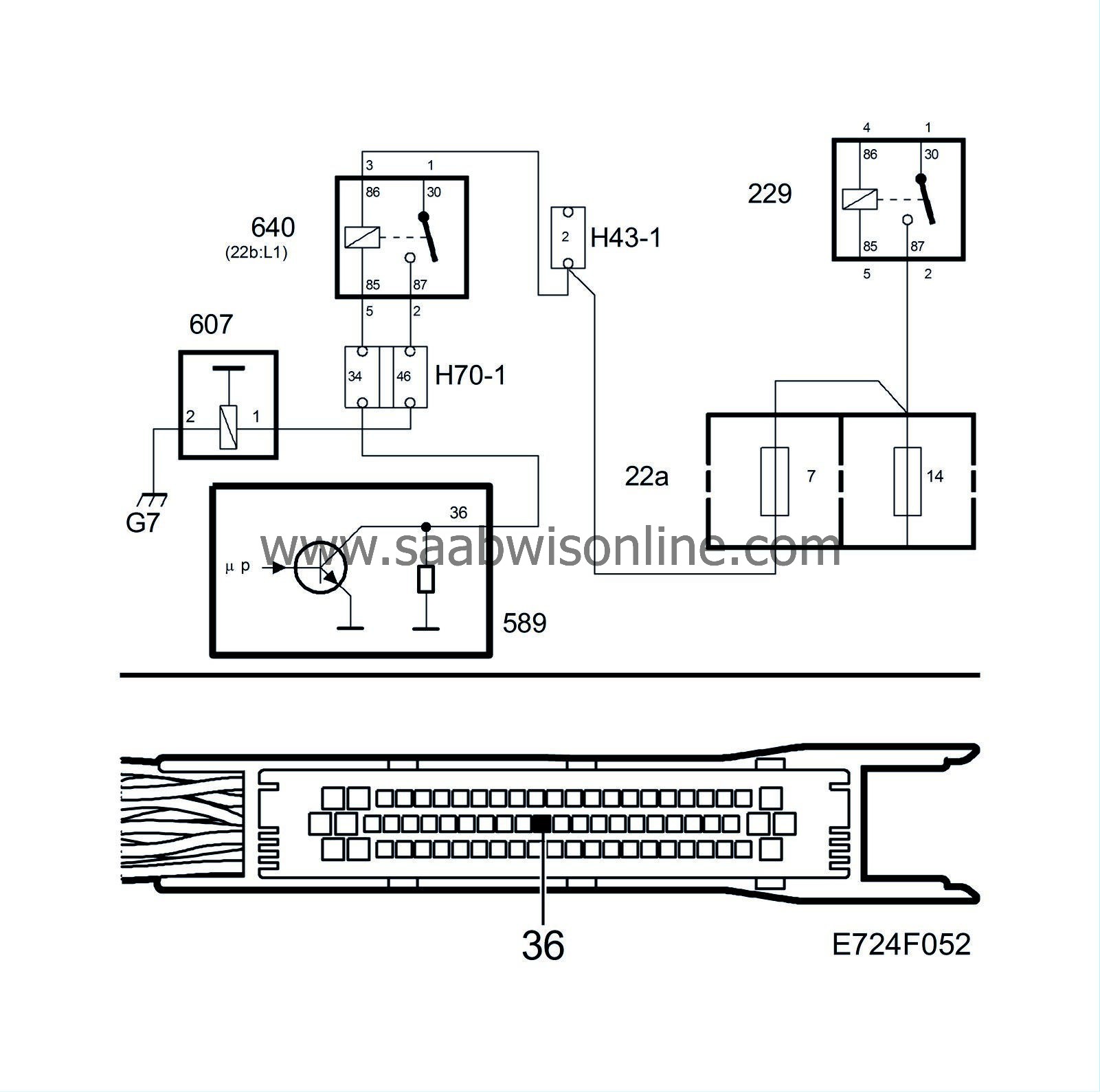P1670
Read the instructions below then
start the fault diagnostic procedure.
Symptom: CHECK ENGINE.
Cruise control not working.
Throttle control may go into mechanical limp-home mode. P1251, P1260 or P1263 could be generated as a secondary fault.
Starting problems, especially when engine is cold.
Limp-home relay, open circuit or short to ground

|
Note
|
|
The relay/electrical circuit that activates the throttle's limp-home function is faulty.
|
Fault symptom
|
•
|
Cruise control not working.
|
|
•
|
Throttle control may go into mechanical limp-home mode. P1251, P1260 or P1263 could be generated as a secondary fault.
|
|
•
|
Starting problems, especially when engine is cold.
|
On-Board Diagnostics
Type of diagnosis:
|
-
|
Continuous. But interrupted when fault criteria fulfilled and will not restart until next driving cycle.
|
Enable criteria:
(Conditions that must be fulfilled before the diagnosis can be performed.)
|
-
|
Engine running. Main relay voltage exceeding 10V. Output not active.
|
Fault criteria:
(After enable criteria have been fulfilled, the diagnosis checks whether fault criteria are fulfilled.)
|
-
|
Output voltage below 2V for more than 1 s.
|
Dependents:
(Occasionally after fault criteria have been fulfilled, a number of other diagnostics must report OK before the trouble code can finally be generated.)
System reaction to a fault:
(After fault criteria have been fulfilled, certain measures will occasionally be taken.)
|
-
|
Cruise control blocked.
|
OK report:
(The diagnosis can be included as a dependent for another diagnosis and must therefore report OK even if it is continuous. The OK report is also used in fault handling to decrement the fault counter.)
|
-
|
Enable criteria fulfilled and fault criteria not fulfilled within 60 s.
|
Fault handling:
(See “Fault diagnosis, general” for more information.)
Diagnostic help
Fault diagnosis concerns electrical faults in connecting cables or in the relay.
Checking the wiring
Jiggle the wiring harness at several points and in different directions to detect intermittent breaks and short circuits. Observe the multimeter, diagnostic tool or test lamp during the check.



